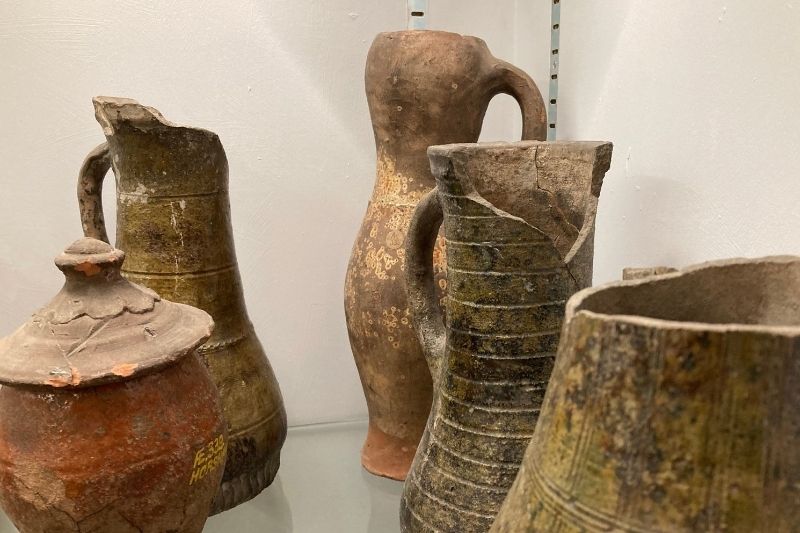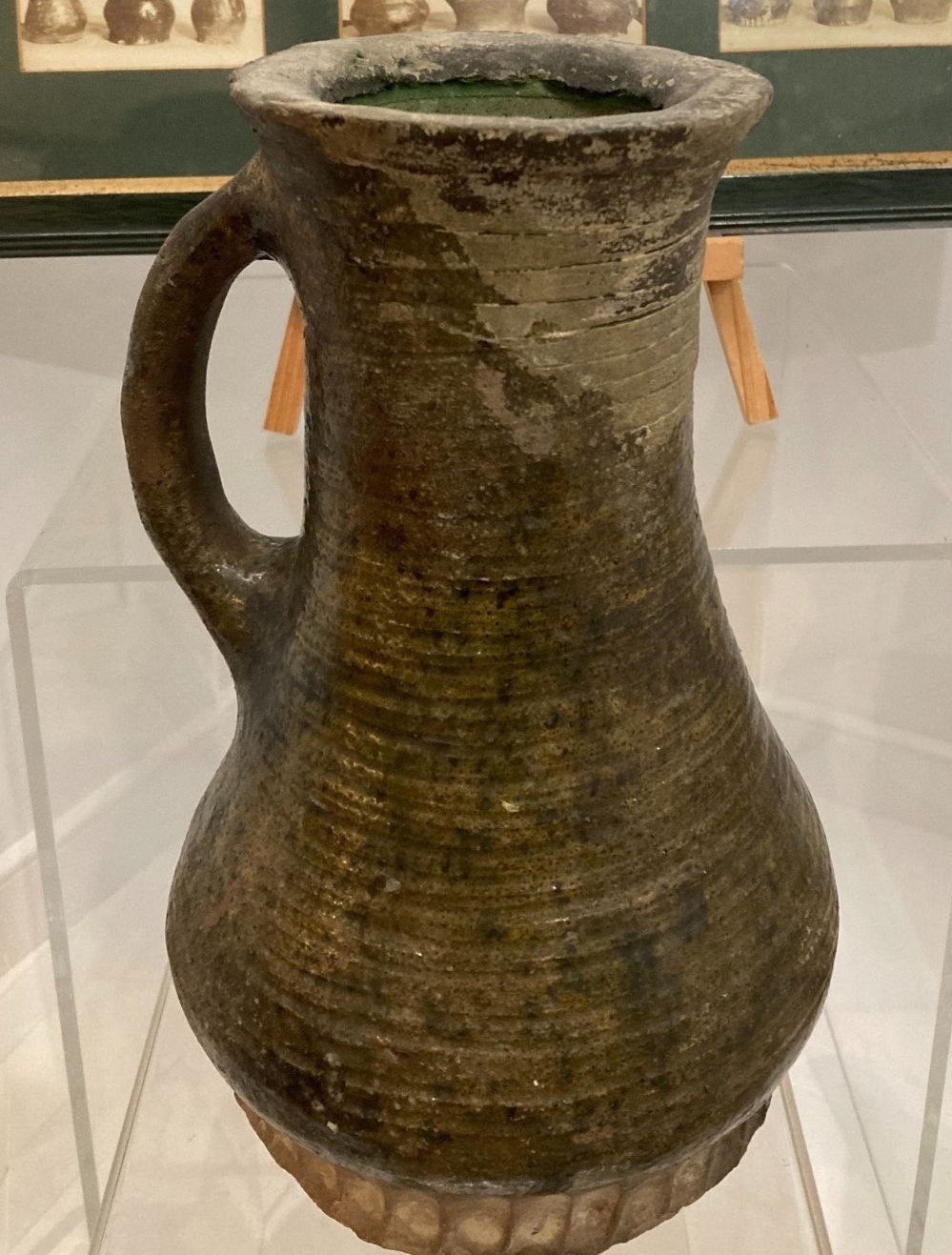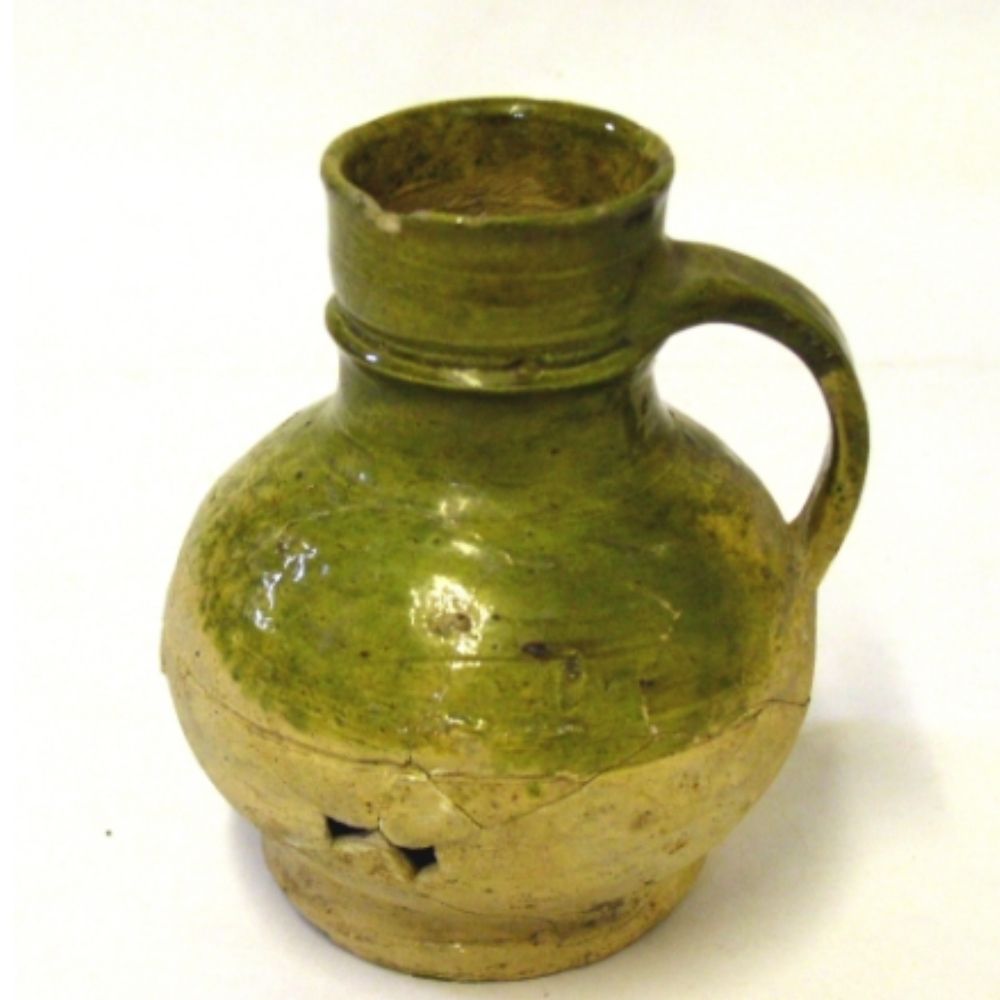
Read on to learn a little more about the history of Pottery in England and about the unique ceramics local to Horsham, on display at the Museum.
In early medieval England crafts like pottery were not generally very highly regarded, it was expected that most people would have some ability to make the functional pots that they would need for cooking and other household tasks. As a result pottery was plain and simple, usually made by the people who would use it.
By the 13th and 14th centuries techniques and technology had advanced and urban potters could mass produce a variety of pottery forms which would often have some decoration in the form of slip work (wet coloured clay used like paint), carved grooves and stamps. Pottery was identifiable by region as different techniques were common in different areas of the country. “West Sussex ware” is found in the area from Lewes to Southampton and encompasses Horsham and Guildford. “Horsham Ware” is a sub-type of West Sussex Ware and vessels of this type are identifiable by their shape, usually tall and cylindrical with an expanded lower section like a bulb. There is often white slip on the inside of the neck and they are typically decorated with carved horizontal bands and a dark green glaze. The best examples of these vessels and the find that earned this sup-type its name is the Horsham Hoard, discovered in West Street by Thomas Honywood in 1867.

Into the 15th and 16th centuries “Tudor Green ware” developed and became very common. These were pots with a far brighter green glaze than the older Horsham Ware. These green colours were made by the use of powdered copper in the glaze mix, and sometimes lead would be added which would make the green colour brighter.
Both the Horsham Hoard and examples of Tudor Green Ware are on display in our medieval gallery here at Horsham Museum, and if you’re interested in pottery don’t forget to have a look at our contemporary ceramics on display in the Craft Gallery upstairs.

Published: 29 Jan 2022
